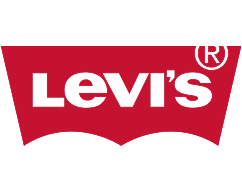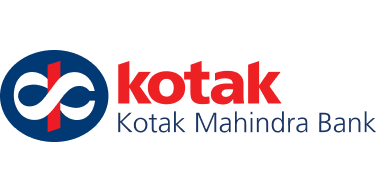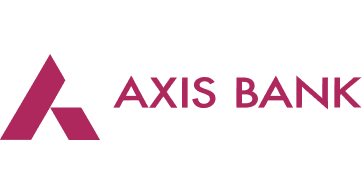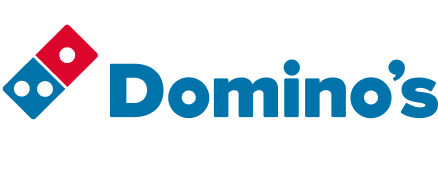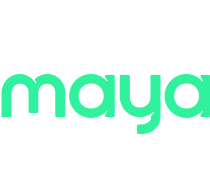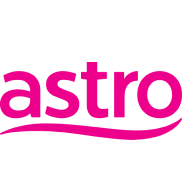Daily active users (DAUs) and monthly active users (MAUs) indicate how sticky your application is for users.
It’s the glue that keeps your app metrics aligned with a company’s strategic business objectives. However, it’s not easy to maintain. A mobile app loses 77% of its DAUs within 3 days. After 30 days, only 5.6% of users remain. This makes user engagement a challenge for marketers.
DAUs and MAUs help quantify this engagement.
This article will compare DAU vs. MAU while touching base on how to use them together. Discover the benchmarks and strategies to adopt while improving current engagement metrics.
What Is DAU?
Daily Active Users (DAUs) count the number of unique users who engage with an app in a 24-hour period. Engagement can take the form of logging in, opening the app, viewing content, or completing a key event.

Regardless of how many sessions a user has, they’re counted once while measuring DAU. For instance, if users visited your app 5,500 times on Monday, but there were only 5,000 distinct users among them, then your DAU for Monday will be 5,000. This metric reflects on users’ engagement with the app.
DAU reflects daily engagement. A high DAU indicates that many users use the app daily, signifying strong habitual use. Gaming and social apps typically focus on DAU because their business depends on frequent usage. For example, a mobile game would aim to keep players returning daily. However, DAU alone doesn’t show how many unique users you have, so it’s often paired with MAU.
What is MAU?
Monthly active users (MAU) count unique users who have engaged with the app at least once over the span of 30 days. It measures the size of your active user base over a month.

“Active” should be defined to match your app’s goals, such as completing a transaction, playing a game level, or visiting a key screen. Simply installing the app doesn’t count; MAU counts users who performed meaningful actions in the 30-day window.
MAU highlights long-term reach and retention. It tells you how many distinct users your app engaged in a month. A growing MAU means your app attracts or retains more users over time. Because it spans weeks, MAU is less volatile than DAU and is often used to calculate growth rates and conversion metrics.
Overall, MAU shows the broader user base to which DAU can be compared.
Calculate your MoM MAU using CleverTap’s month over month calculator.
How to Draw Insights From DAUs and MAUs Together
Marketing and product teams track DAU and MAU to understand engagement trends and retention.
Ideally, these metrics should move in tandem; if MAU grows, DAU should too, as more users are available to engage daily. However, discrepancies reveal more profound insights. For example, a spike in MAU from a campaign but a flat or slower DAU rise means many new users aren’t returning daily.
Conversely, high DAU with much lower MAU suggests a small core of loyal users but little overall growth. Sometimes you have many daily active users, while your monthly user count will be way less. That’s a sign of low retention, and you must address it immediately.
How to Use DAUs and MAUs Together: Explained With an Example
An e-commerce app runs a sale and adds 10,000 new users in a month (MAU), but DAU only increases by 500. The DAU/MAU ratio falls, signaling poor stickiness.
What should the team do? Improve onboarding and send follow-up offers to convert new users into regular customers. If you’re facing a similar situation, here are a few tips to improve e-commerce user onboarding.
In contrast, a fintech budgeting app sees MAU climb steadily while DAU rises more slowly.
What should the team do? Add daily alerts while using automation to send targeted messaging to customer segments. Check out these fintech best practices for improving the DAU/MAU ratio.
Overall, analyzing DAU and MAU together allows you to pinpoint the tactic or strategy your app needs to improve on those metrics.
DAU/MAU Ratio: Its Importance and Benchmarks
The DAU/MAU ratio is a user engagement metric that measures app stickiness. It represents the proportion of monthly active users (MAUs) who engage with the product on a daily basis. It’s calculated as:
DAU/MAU Ratio = (DAU ÷ MAU) × 100%
For instance, if your app has 5,000 DAUs and 20,000 MAUs monthly, the DAU/MAU ratio is 5,000/20,000 = 25%.
The higher your DAU/MAU ratio is, the stickier your mobile application is. A higher number indicates that your app is part of the user’s daily routine. It’s a direct signal of habitual usage.
- 20% DAU/MAU means users open your app about 6 days/month.
- 50% DAU/MAU suggests users open it every other day.
- 70% and above DAU/MAU signifies extreme stickiness (like WhatsApp or Instagram).
The Importance of the DAU/MAU Ratio
The DAU/MAU ratio drives strategic decisions on engagement and retention. A higher ratio means a greater share of your users are engaged daily, which typically translates into higher customer lifetime value and revenue.
Since acquiring new users is far costlier than retaining existing ones, improving stickiness can dramatically increase ROI. It costs 5 to 7 times more to acquire new users than to retain existing ones.
Marketers should run retention campaigns or improve the app onboarding flow if the ratio is low. Conversely, if it’s high, it’s a good sign to shift focus on scaling user acquisition. In either case, the ratio helps improve long-term engagement.
DAU/MAU benchmarks
Benchmarks vary by industry. According to research, social and gaming apps tend to have the highest stickiness, while commerce and finance have lower stickiness. For example, industry reports show:
- E-Commerce Apps: 10% DAU/MAU on average. Around 1 in 10 users return to the app daily.
- Fintech or Finance Apps: 22% DAU/MAU based on CleverTap’s data. Some websites claim it to be in the range of 10% to 20%.
- Gaming or Social Apps: The DAU/MAU ratio varies between 20% and 50%. Facebook has historically stayed above 50% DAU/MAU.
See these benchmarks as ballpark figures. They change over time for different industries.
Bonus: What About WAU?
Weekly Active Users (WAU) is the number of unique users who engage in the app for 7 days. Like DAU and MAU, it counts distinct users who meet the “active” criterion in any given week.
WAU smooths out day-to-day ups and downs. For instance, Slack will have very high DAUs Monday through Friday and see a significant drop over the weekend. WAU lets you see weekly app activity without accounting for low activity on certain days, which is expected. This metric is useful when usage naturally fluctuates over a week.
It sits between DAU and MAU on the engagement spectrum. WAU gives a clearer picture of retention when the user doesn’t expect it daily.
5 Strategies to Improve DAU/MAU Ratio
Improving stickiness means getting users to return more frequently. Here are some proven tactics, with examples:
1. Personalize campaigns
Use targeted push, in-app, email, or SMS messages based on user behavior. However, it’s not as simple as setting up omnichannel campaigns and hoping for the best. You need a proper strategy and technological support.
Platforms like CleverTap allow you to strategize personalized campaigns that deliver the right message at the right time to attract users. Using its real-time segmentation and personalized messaging, CleverTap clients have seen an incredible increase in user activity.
Fonos, a Vietnamese audio content start-up, achieved exceptional results while using CleverTap as a daily companion for customer engagement. Here’s a quick feedback from their Head of Growth Marketing, Nguyen Hong Nhung.
Here’s the overview of the impact Fonos observed by personalizing their campaigns:
- Achieved a 25% month-over-month increase in monthly active users (MAU)
- Recorded email open rates of 20%, outperforming industry benchmarks
- Realized 10% open rate on in-app messages
In practice, dynamically tailoring content keeps users coming back.
2. Gamify Rewards and Loyalty
Introduce game-like elements or rewards to encourage daily use. E-commerce apps often use daily spin wheels or loyalty points; for example, coffee or ride apps reward daily visits.
For example, Duolingo makes language learning fun and addictive by using smart gamification techniques. They use XP and levels to show progress and daily streaks to push you to practice every day. Weekly challenges let you compete with others, which keeps you coming back.
Daily login bonuses, quests, or streak rewards are standard in gaming. These incentives give users a reason to open the app each day. For example, Starbucks’ loyalty program and many fitness apps use point systems to drive habit formation. The strategy is to give users a small reward or progress feedback daily to build a habit.
Here’s a deep dive into 14 app gamification examples. Check it out to see how you can use their inspiration to increase user activity.
3. Use re-engagement campaigns
Segment out dormant users and bring them back. Send well-timed reminders or offers to users who haven’t visited. Timing and personalization are key in this strategy. CleverTap allows you to automatically target users who are at risk of churn with the right incentives. The platform comes power-packed with predictive segmentation, making it easy to target different segments of users and re-engage them effectively.

Sometimes, these campaigns do not need to be too complicated. Something as simple as “Your cart is waiting” or “You missed out on the weekend sale, but we have some exclusive discounts for you” works.
Using data-driven A/B tests on message content and timing helps you refine these campaigns for maximum effect.
4. Optimize Onboarding and Time-to-Value
Ensure new users quickly experience the app’s core value. A clear, helpful onboarding flow raises DAU/MAU as it locks in users early. For instance, an e-commerce app gives a first-purchase discount immediately after signup. Or a fintech app delivering its core value in the earlier stage of the onboarding flow.
A/B testing onboarding flows is a surefire way to optimize for time-to-value. Optimize for activation so that users reach the “aha” moment faster. This supercharges retention, encouraging users to keep coming back for value.
5. Make Use of Social and Referrals
Encourage sharing among the community. Many apps offer refer-a-friend bonuses or social features to increase usage. Building a small social bond nudges users to return. Cult.fit, a fitness company offering digital and offline training, does this nicely. For every referral, the app adds one extra month to your and your friend’s membership.
You can add them to your squad and measure a weekly fitness streak on the application. This way, you’re socially encouraged to build a fitness habit and use the app regularly to mark attendance and maintain your streak.
Track and Improve DAU/MAU With CleverTap
CleverTap is an all-in-one engagement platform built for marketers. It maintains each person’s customer profile with all their data, so DAU/MAU counts are accurate with minimized risk of double-counting.
You get a 360° view of each user’s journey, crucial for measuring authentic engagement across the web, mobile app, or email. Under the hood, CleverTap uses TesseractDBTM, a patented real-time database for engagement. It stores and analyzes up to 10,000 data points per user monthly, retaining user data for up to 10 years to fuel advanced personalization. It allows you to segment users by behavior, including past purchases, activity frequency, and app events.
CleverTap supports messaging across all channels, including mobile push, in-app, email, SMS, WhatsApp, and web push. It makes it easy to design campaigns with the right message to reach users wherever they are. This hyper-personalized experience causes measurable lifts in user engagement and other key performance metrics like ROI or revenue.
Below are some valuable features you get with CleverTap:
- Identity Management: Allows you to identify anonymous and known users from accurate DAU/MAU tracking.
- Real-Time Segmentation: Segments users instantly and intelligently based on their real-time behavior.
- Funnels, Cohorts, Dashboard: Facilitates daily tracking of trends to identify engagement drop-offs and implement improvements.
Ready to make your app stickier? Book a demo today to see how CleverTap helps boost user engagement.
Subharun Mukherjee 
Heads Cross-Functional Marketing.Expert in SaaS Product Marketing, CX & GTM strategies.
Free Customer Engagement Guides
Join our newsletter for actionable tips and proven strategies to grow your business and engage your customers.





